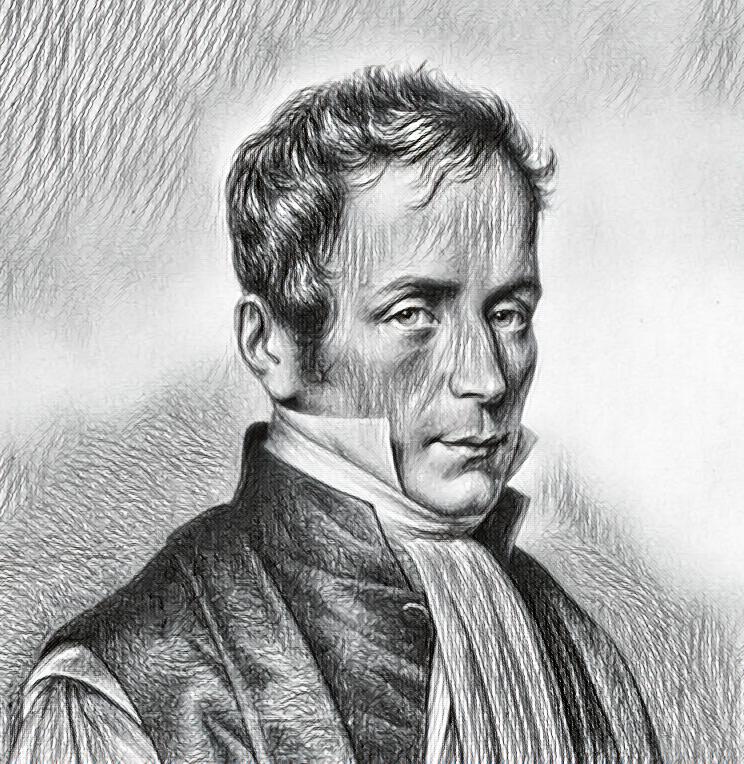Rene Laennec
French physician and inventor René Théophile Hyacinthe Laennec sealed his place in history with a number of important contributions to the medical field. A pulmonary disease pioneer, he introduced the diagnostic method known as mediate auscultation and invented the device that no modern doctor can live without, the stethoscope.
Born in the city of Quimper, in Brittany, France on Feb. 17, 1781, Laennec’s mother died of tuberculosis when he was six. Subsequently, his father sent him to live with his granduncle. He visited Nantes when he was 12, where his uncle was a practicing physician and taught as a professor at the university there.
Inspired by what he learned from his uncle, he went to Paris to pursue an education in medicine at the age of 19, where he studied at the Hôpital de la Charité under several well-known physicians of the time, including Napoleon Bonaparte’s personal doctor, Jean-Nicolas Corvisart des Marest. He qualified in 1804. While still a student, he gave one of the world’s first lectures on melanoma, coining the term melanoma from the Greek word for “black.” The lecture was published a year later.
From Corvisart, Laennec had learned to use a method of tapping his fingers on a patient’s chest to diagnose disease. He improved on this technique by placing his ear directly on the patient’s chest and learning how to differentiate between healthy and unhealthy sounds of the heart. In 1816, while working at the Hôpital Necker, he realized that for patients carrying excess weight, it was often too difficult to hear what was happening in a patient’s chest. Furthermore, it was awkward, if not impermissible, for him to put his ear to the chest of female patients. He recalled a children’s game, where players held a long piece of wood to their ears while another child at the other end made tapping sounds with a pin. The sounds were transmitted through the wood. This gave him an idea.
First, Laennec rolled sheets of paper into a cylinder and applied the resulting roll to a patient’s chest, listening with his ear pressed to the other end. He discovered that it worked quite well and began experimenting with materials to improve the tool. His final design consisted of a hollowed-out cylinder of wood, about a foot long and an inch and a half wide. He called the instrument a stethoscope, using the Greek word “stethos,” for chest. The “New England Journal of Medicine” reported the invention of the stethoscope two years later, though many doctors continued to use the ear-to-the-chest method of listening to the heart for years to come. American doctor George Cammann invented the binaural stethoscope, which had two earpieces, in 1852.
Meanwhile, Laennec embarked on a massive research project, categorizing unhealthy sounds made by the human heart and, by conducting autopsies on deceased patients, identifying their causes. This allowed him to better diagnose and treat new patients. He refined his research, giving names to sounds that are still used today, such as rhonci and rale. His work culminated in the publishing of his classic 1819 work, entitled "De l'Auscultation Mediate" ("On Mediate Auscultation"). This book has been called one of the most important books in medical history, along with the works of Hippocrates. For this, Laennec has been called the father of thoracic medicine.
Laennec coined the term “mediate auscultation," which means using a mediator, or tool, to listen to and identify sounds made by the human body. He was also the first to use the word “cirrhosis,” from the Greek for “tawny,” and the first to describe a rare tuberculosis of the skin disease.
In 1822, Laennec took over the post of chair of medicine at the Collège de France from Corvisart. He became a professor of medicine there a year later, and he also became Head of the Medical Clinic at the Hôpital de la Charité.
At the young age of 45, while studying tuberculosis, Laennec contracted the disease. He returned to Brittany, where he died in Kerlouanec on Aug. 13, 1826.


